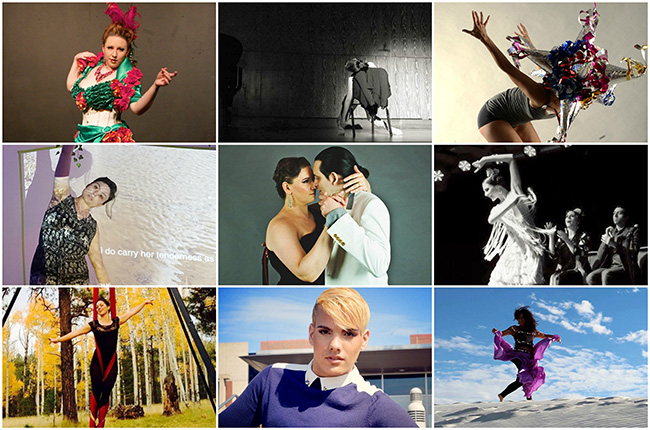Observations on the Definition of ‘Professional Dancer’
BY EMMALY WIEDERHOLT
Over New Years, I initiated a series on what professionalism means in dance, since it’s one of those occupations wherein it’s difficult to find 30 to 40 years of continuous salaried work. I have my own wobbly insecurities about my legitimacy as a dance artist, especially since I made a conscientious decision four years ago to leave San Francisco in the wake of the rising costs of living, settle down in funky New Mexico, and take a salaried job writing for a magazine. My pieced-together dance life definitely doesn’t look like my 15-year-old fantasy of being a professional. But my 31-year-old assessment of the dance field makes it increasingly clear that the dream had a few gaping holes.
So what does it mean to be a professional dancer in 2018? In our increasingly “woke” culture when it comes to racism, able-ism and privilege, is the generally accepted definition of “professional dancer” waking up to an aware, more-nuanced reality? When money often equates with power, and making money is tied up in social constructs of professionalism, who has the power to decide what professional dance is?
Over the past two months, I have garnered the views of 15 different dance artists on the topic of professionalism. The voices vary in age, ethnicity, orientation, ability and, perhaps most significant for this discussion, genre, though contemporary dancers dominated due to my connections bias. Some are totally self-made artists, others have worked with large and well-endowed institutions. Some live in small towns, most live in big cities. Some are quite young, others answered my questions with the benefit of perspective.
Here are some of the most interesting and unexpected findings from the series (though I assure you it’s well worth reading each perspective individually):
- The dancers who practice a specific form (as opposed to the nebulously defined contemporary dance genre) had more concrete parameters about what professional dance is, what training is entailed, and why professionalism matters. It seems the types of gigs are more straightforward (again, as compared with contemporary dance), so the requisite training and preparation is more scripted.
- Most respondents believed getting paid was part of being professional (though most were liberal with how much). Interestingly, it was the two dancers who have performed within the most institutional companies (and have since left them) who felt anyone can define his/herself as a professional dancer who chooses to.
- For many respondents, it was clear that the question of what makes a professional dancer was a psychological exercise in evaluating their own sense of success. I found this personally relevant, as I experience the same mental gymnastics when I consider my professional writer and dancer selves. I do not spend any time at all wondering if I am a professional writer, and I have no intense emotional attachment to the label. Well before I worked fulltime as a writer, I was running this blog, which in many ways is more important to me than my “job,” even though I don’t get paid for it. But since I do make a salary from other writing, I don’t have any hang ups with broadly calling my writing professional. Since most of my dancing is marginally compensated at best, and I don’t seek out grants nor teach, I struggle with wondering if it must be an elaborate hobby, even though I have more extensive training and experience in dance than journalism.
- Which brings me to my next point: In my mind, there is a difference between “professional dancer” and “dance professional,” but almost every respondent seamlessly combined the two. Dance teacher and dance administrator tended to be the most common occupations lumped with “dancer.” Though they are not the same activity, it seems apparent that if someone wants to make a living completely from dance, most likely some sort of teaching and administrating is going to be involved.
- More than one respondent brought up the fact that there are more people calling themselves dancers than 25 or 50 years ago. This is because the slender body stereotype perpetuated by the ballet and modern dance world is increasingly problematized, and we see more dancers of different shapes and sizes confidently considered professional than in the 60s, 70s or 80s. If there is more funding to subsidize the growing field remains to be seen.
- The flamenco dancer and the burlesque dancer brought up the fact that some of the most well-regarded contributors to their respective fields don’t consider themselves to be professional. And many respondents brought up the greater commitment to the art form that might transcend any monetary compensation.
- Finally, there was a general frustration with “the system” and how taxing it is for an individual to “make it” in dance over the long run.
In closing, let me get on my soap box: I hope one day I’ll email a bunch of dance artists about whether or not they consider themselves to be professional, and they will all respond, “Duh! Look at how my community, culture and society value, appreciate and compensate my work! Why do you even ask?”

